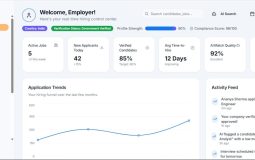In the rapidly evolving digital landscape, content creation is undergoing a transformative shift. The rise of AI-powered conversational interfaces, particularly chatbots, has expanded the purpose of content far beyond traditional web pages and blog formats. Today, content must be ready not only for human readers but also for integration with chatbots, virtual assistants, and other AI-driven systems. This shift has given rise to a new paradigm: chatbot-ready content.
Building chatbot-ready content requires rethinking how information is structured, written, and segmented. Unlike conventional blogs that follow a linear storytelling format, chatbot-ready content must be designed for instant accessibility, modular delivery, and contextual relevance. This article explores what chatbot-ready content means, how bloggers and content creators can adapt to this new format, and what strategies can optimize content for both human and AI engagement.
Understanding Chatbot-Ready Content
Chatbots and AI assistants are trained to answer specific questions by parsing through available content, retrieving the most relevant snippets, and presenting them in human-like responses. Traditional blog posts, with their narrative style and elaborate introductions, often conceal crucial information deep within long paragraphs. This makes them less than ideal for chatbot processing.
Chatbot-ready content, on the other hand, is optimized to serve content fragments that answer specific questions clearly and quickly. It’s not just search engine optimized — it’s AI-ready. Text structure, headings, semantic cues, and granular detail all play a critical role. Creators must now begin to write not just for readers, but for machines that interpret language.
Here’s where the shift begins: instead of organizing content by word count or storytelling flow, chatbot-ready content prioritizes modularity, clarity, and intent.
Core Principles of Chatbot-Ready Content
- Modularity: Break content into clear, independently understandable chunks that can be referenced out of context.
- Clarity: Use simple language and direct sentence structures to avoid confusion in natural language processing.
- Intent-Focused Design: Anticipate queries by organizing content around common user questions and scenarios.
- Semantic Tagging: Use relevant HTML structure (like
<h2>,<p>,<ul>) to guide AI systems.
Switching to this kind of content development demands a new mindset. While visually engaging, traditional blog writing often buries important insights well into the text. Chatbots require surface-level efficiency — they don’t scroll, and they don’t skim. They extract.

Preparing Existing Blogs for Chatbot Consumption
Transitioning older blogs for better AI integration involves a content audit. This recalibration ensures that each piece of content delivers maximum value not just in narrative depth, but in machine-readability. Here are some actionable steps to make blog posts more chatbot-friendly:
- Identify Key Questions: Review existing blogs and extract common user intents that align with the content.
- Create Summary Blocks: Place concise summaries at the top of the blog answering who, what, when, where, why, and how.
- Use Descriptive Subheadings: Replace vague headers like “More Info” with question-based headers like “How Does This Affect SEO?”
- Include FAQs: Add a clearly structured FAQ section at the bottom to directly answer popular queries.
- Define Terminology: Make definitions of critical terms clear and instantly accessible with short, stand-alone paragraphs.
This approach not only makes the content more accessible to chatbot querying but also enhances readability for users. In fact, the more structured and logical your blog is, the more value it delivers to both AI and human audiences.
Writing Content for Chatbot Discovery
Creating new blog posts with chatbot consumption in mind means embracing a new approach to outlining and writing. Here’s how to future-proof your next blog:
- Lead with Value: Start each section with the key takeaway before diving into explanations or narratives.
- Write for Questions: Frame subheadings as direct queries. Think of how the user might phrase a voice query or message a chatbot.
- Keep it Crisp: Use sentences and paragraphs that are short and punchy. Length dilutes clarity for bots.
- Include Metadata: Add rich media tags, schema markups, or contextual labels to give search engines and AI tools more cues.
Chatbot-ready doesn’t mean dry. Writers can still use engaging styles, but presentation needs to emphasize clarity. Narrative layering can still exist — but ensure that primary insights are never hidden in metaphor or anecdote.

Structuring Blogs for Conversational AI
Structure is critical. Conversational AI relies on linking questions to contextually relevant answers within your content. A chatbot parsing a page looks for semantic cues, markup, and consistent formatting patterns.
Consider implementing standardized section structures in blogs:
- Intro Paragraph: Briefly introduce the topic and its relevance.
- Problem Statement: Define the core issue or question being addressed.
- Key Insights: Present a list of top findings or solutions at a glance.
- Deep Dive: Offer context and examples under specific subheadings.
- FAQ Section: Preempt frequently asked questions in bullet Q&A format.
Consistency in this structure makes it easier for chatbots to reliably index and extract data. It effectively makes your text more “query responsive”.
The SEO Connection: Search and AI Come Together
Optimizing content for chatbots also ties directly into smarter SEO practices. Google’s reliance on its BERT and MUM models — both natural language processing engines — means that richly structured content is already being favored.
Featured snippets, knowledge graphs, and answer boxes are all stepping stones to chatbot responses. Thus, when you write for question-based discovery, use clean markup, and deliver well-structured information, you’re improving your SEO in real and measurable ways.
Think of chatbots not in opposition to search engines, but as the next evolution in how users engage with search. Being chatbot-ready means being search-forward.
Conclusion
Chatbots are changing the way we create and consume online information. For content creators, this is not just a challenge but also an opportunity. Learning to build chatbot-ready blog content is about embracing a future where AI becomes a natural content partner. Through modular structure, clear language, and question-centric presentation, your content becomes primed for discovery in a world that’s increasingly conversational.

Frequently Asked Questions (FAQ)
-
What is chatbot-ready content?
Chatbot-ready content is written and structured in a way that AI systems, virtual assistants, and chatbots can easily interpret, extract, and present in response to user questions. -
How does chatbot-ready content differ from traditional blog posts?
Traditional blogs often follow a narrative format, while chatbot-ready content uses modular, question-answer based formatting that prioritizes direct answers and clarity. -
Why should bloggers care about chatbot-ready formatting?
As more users rely on voice assistants and AI tools for information, chatbot-friendly content ensures better visibility, engagement, and improved SEO. -
Can older blogs be converted into chatbot-ready formats?
Yes, by auditing and restructuring existing content into clear sections with question-oriented headings, concise summaries, and FAQs. -
Does chatbot-optimized content improve SEO?
Absolutely. Structured content that answers direct queries is favored by search algorithms and is more likely to be featured in SERP snippets.







